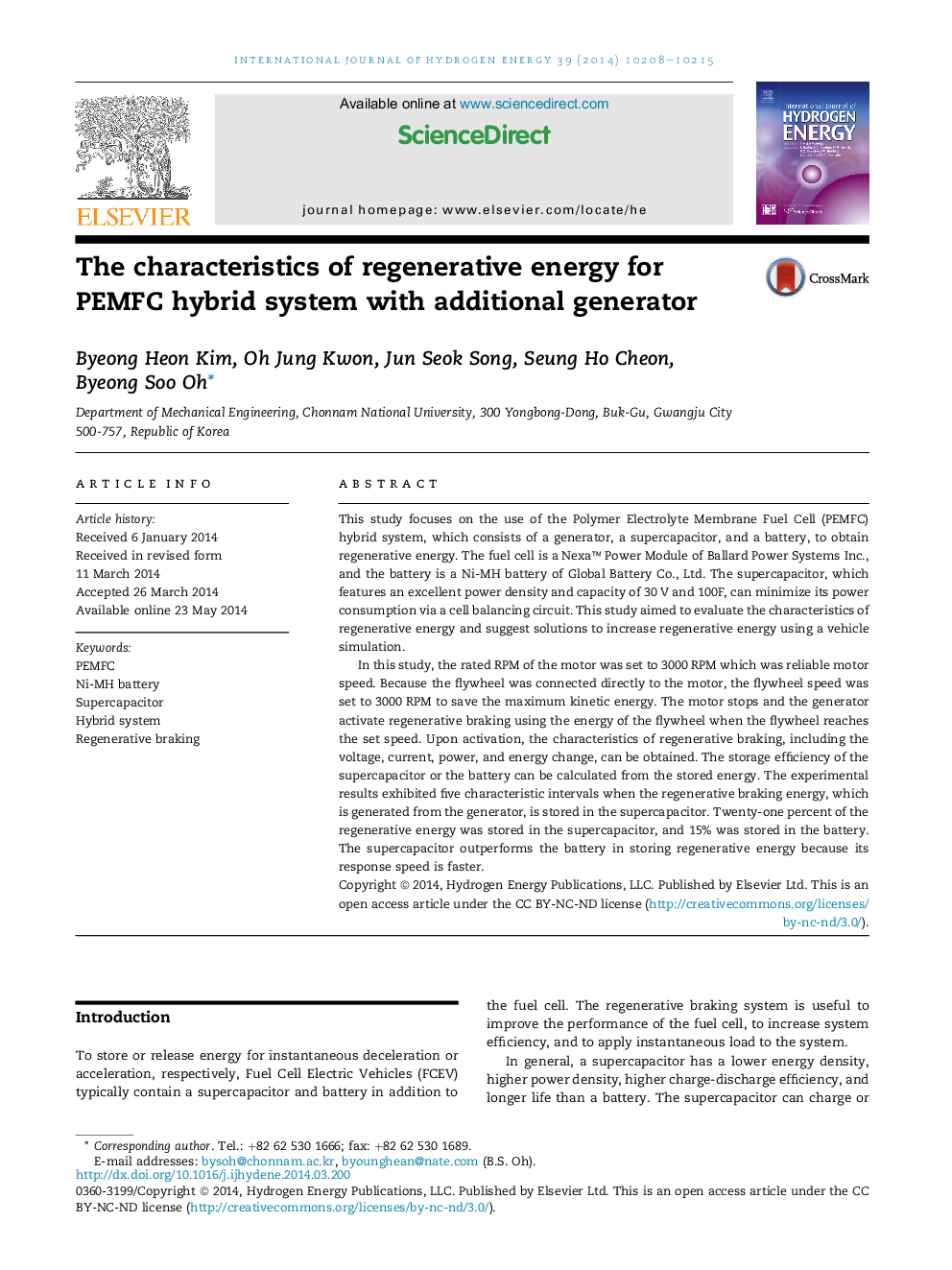| Article ID | Journal | Published Year | Pages | File Type |
|---|---|---|---|---|
| 1270373 | International Journal of Hydrogen Energy | 2014 | 8 Pages |
•PEMFC hybrid system is consists of a battery/supercapacitor/generator.•A flywheel was used as a simulated experimental equipment for the vehicle.•The regenerative braking began to run when the flywheel reaches the set speed.•The supercapacitor saves 21% of the regenerative energy and the battery saves 14%.•The total efficiency of the energy storage system is 35%.
This study focuses on the use of the Polymer Electrolyte Membrane Fuel Cell (PEMFC) hybrid system, which consists of a generator, a supercapacitor, and a battery, to obtain regenerative energy. The fuel cell is a Nexa™ Power Module of Ballard Power Systems Inc., and the battery is a Ni-MH battery of Global Battery Co., Ltd. The supercapacitor, which features an excellent power density and capacity of 30 V and 100F, can minimize its power consumption via a cell balancing circuit. This study aimed to evaluate the characteristics of regenerative energy and suggest solutions to increase regenerative energy using a vehicle simulation.In this study, the rated RPM of the motor was set to 3000 RPM which was reliable motor speed. Because the flywheel was connected directly to the motor, the flywheel speed was set to 3000 RPM to save the maximum kinetic energy. The motor stops and the generator activate regenerative braking using the energy of the flywheel when the flywheel reaches the set speed. Upon activation, the characteristics of regenerative braking, including the voltage, current, power, and energy change, can be obtained. The storage efficiency of the supercapacitor or the battery can be calculated from the stored energy. The experimental results exhibited five characteristic intervals when the regenerative braking energy, which is generated from the generator, is stored in the supercapacitor. Twenty-one percent of the regenerative energy was stored in the supercapacitor, and 15% was stored in the battery. The supercapacitor outperforms the battery in storing regenerative energy because its response speed is faster.
